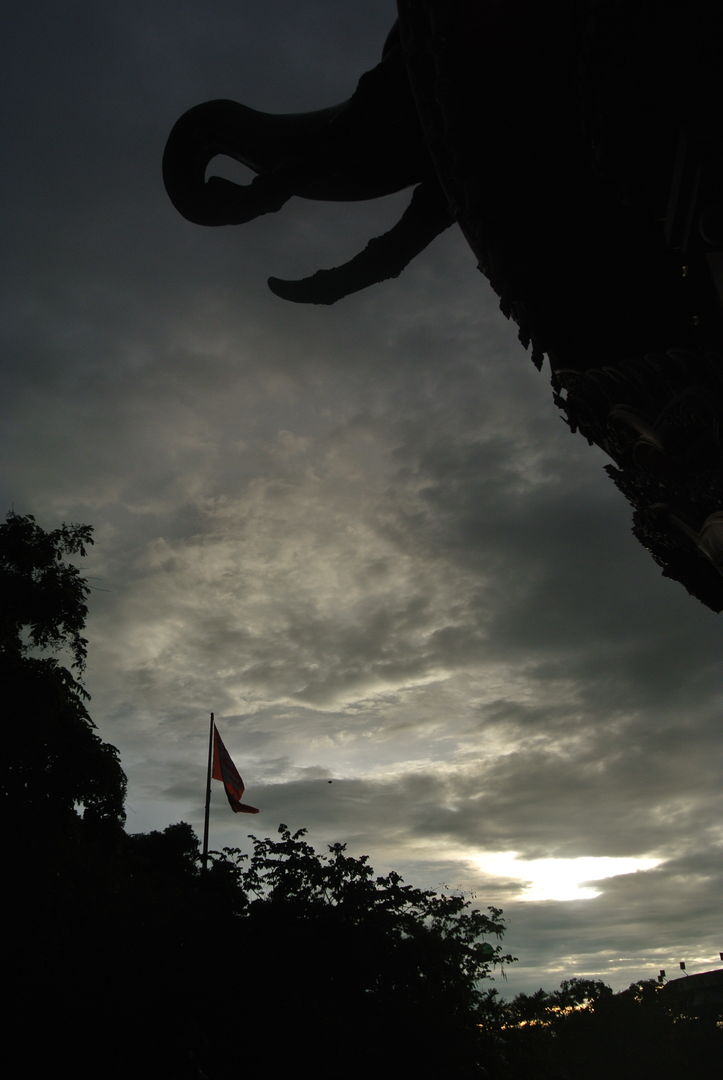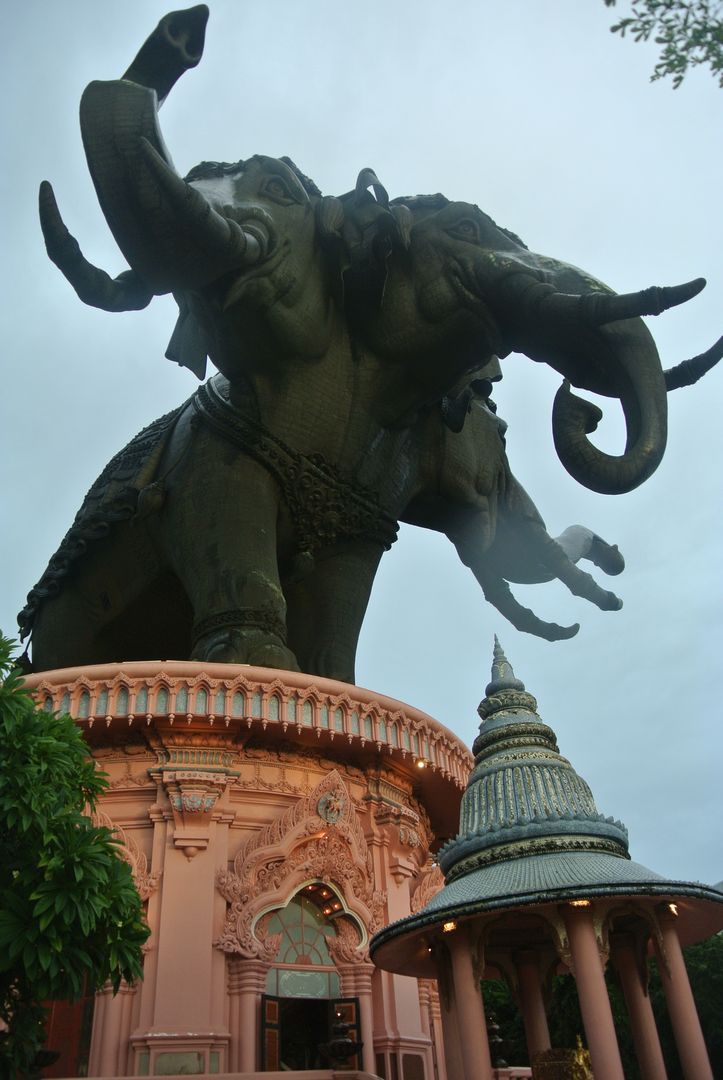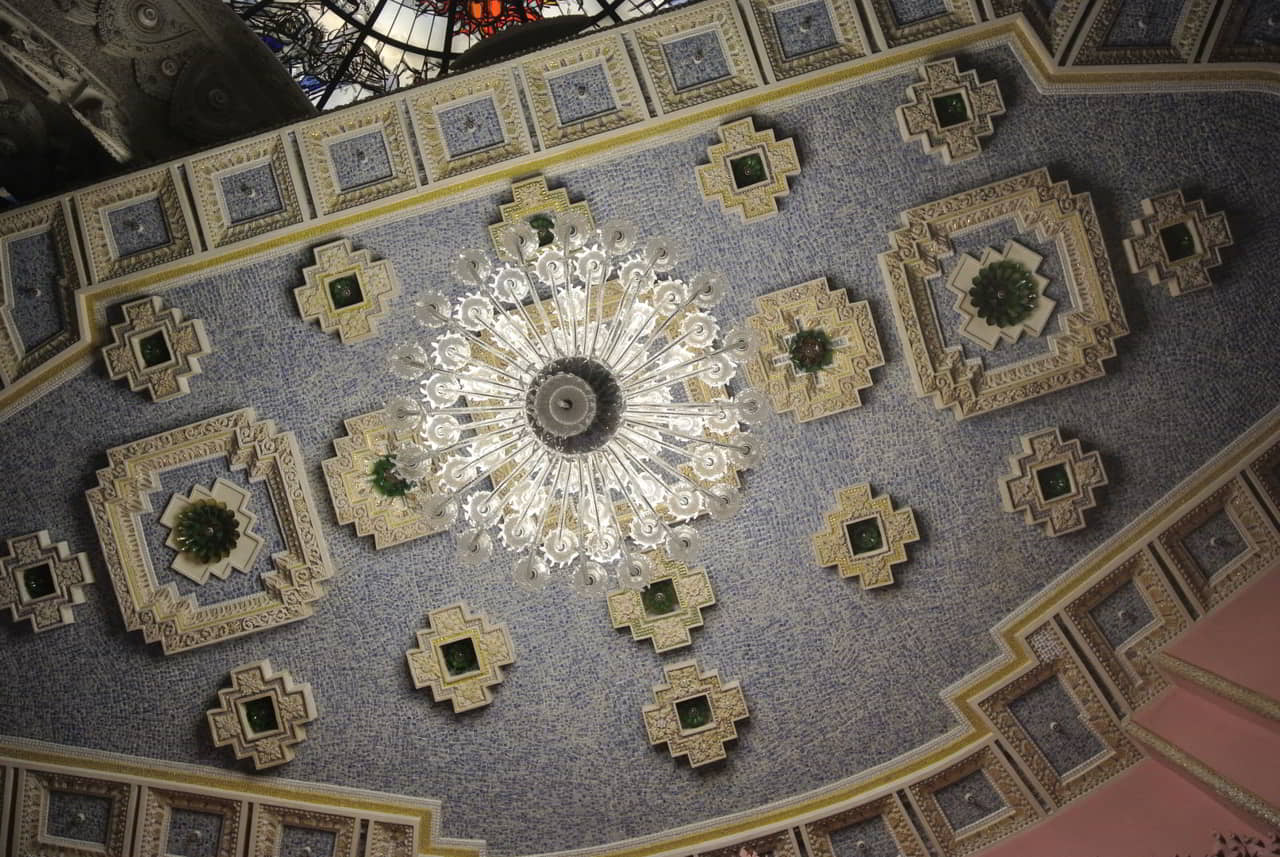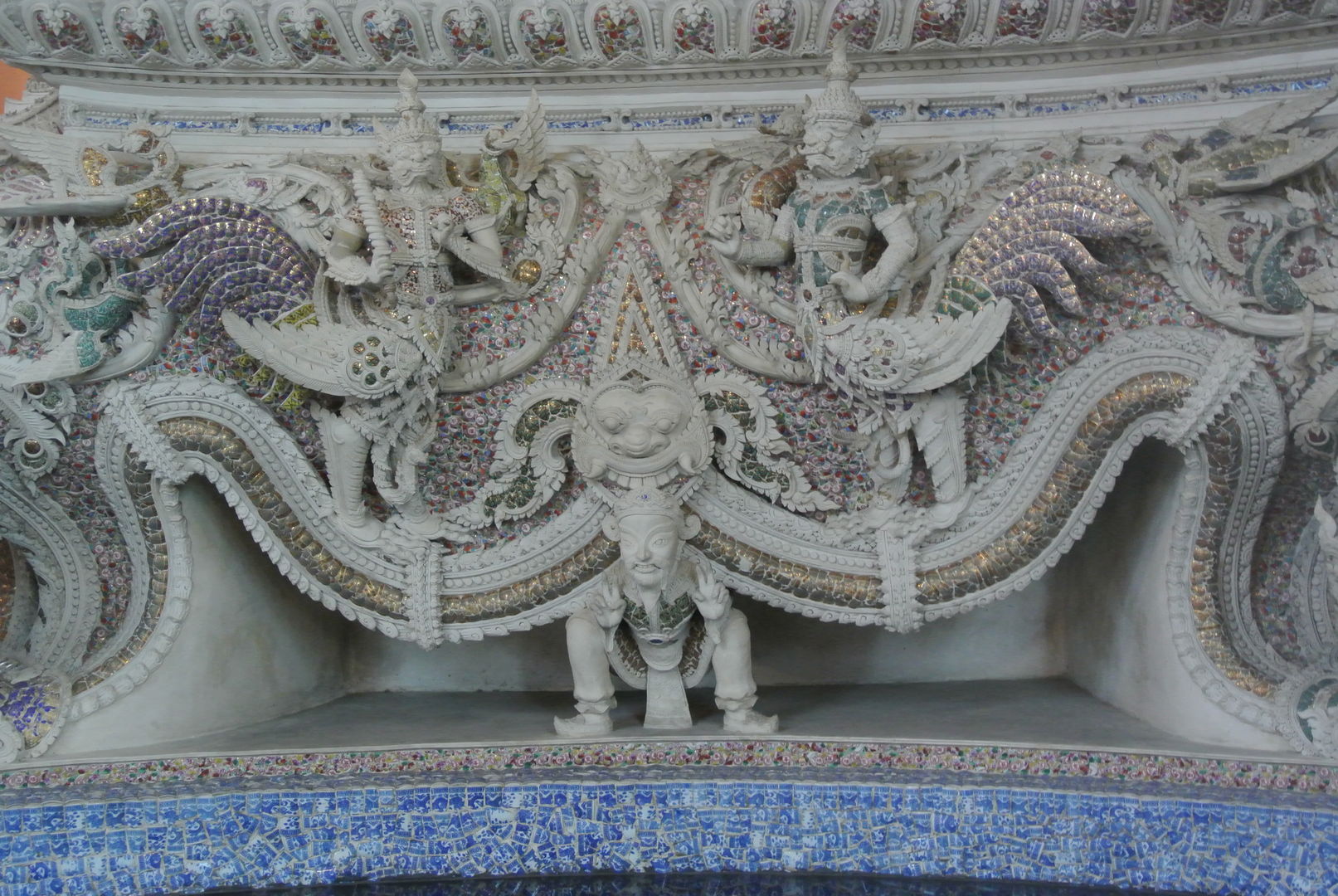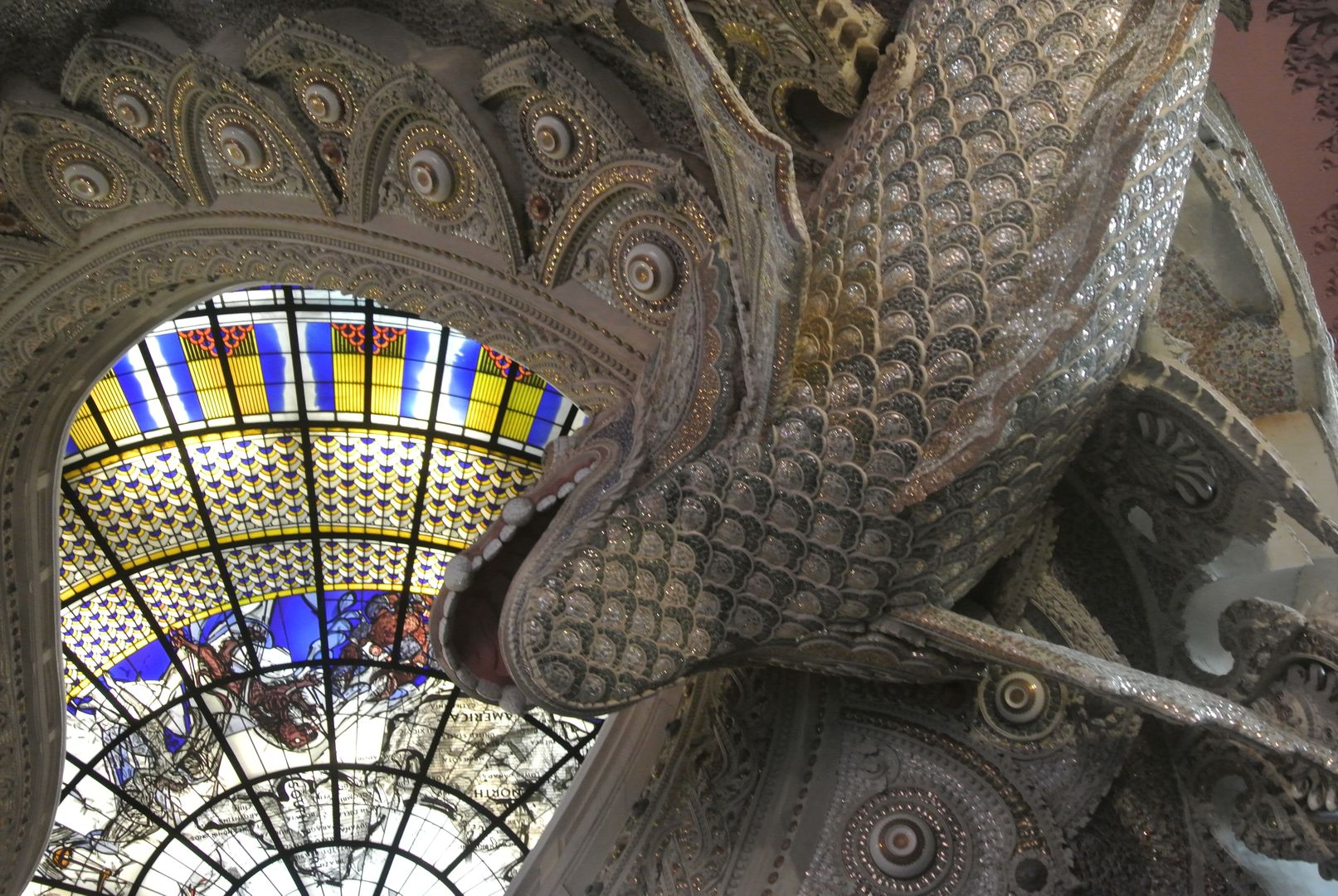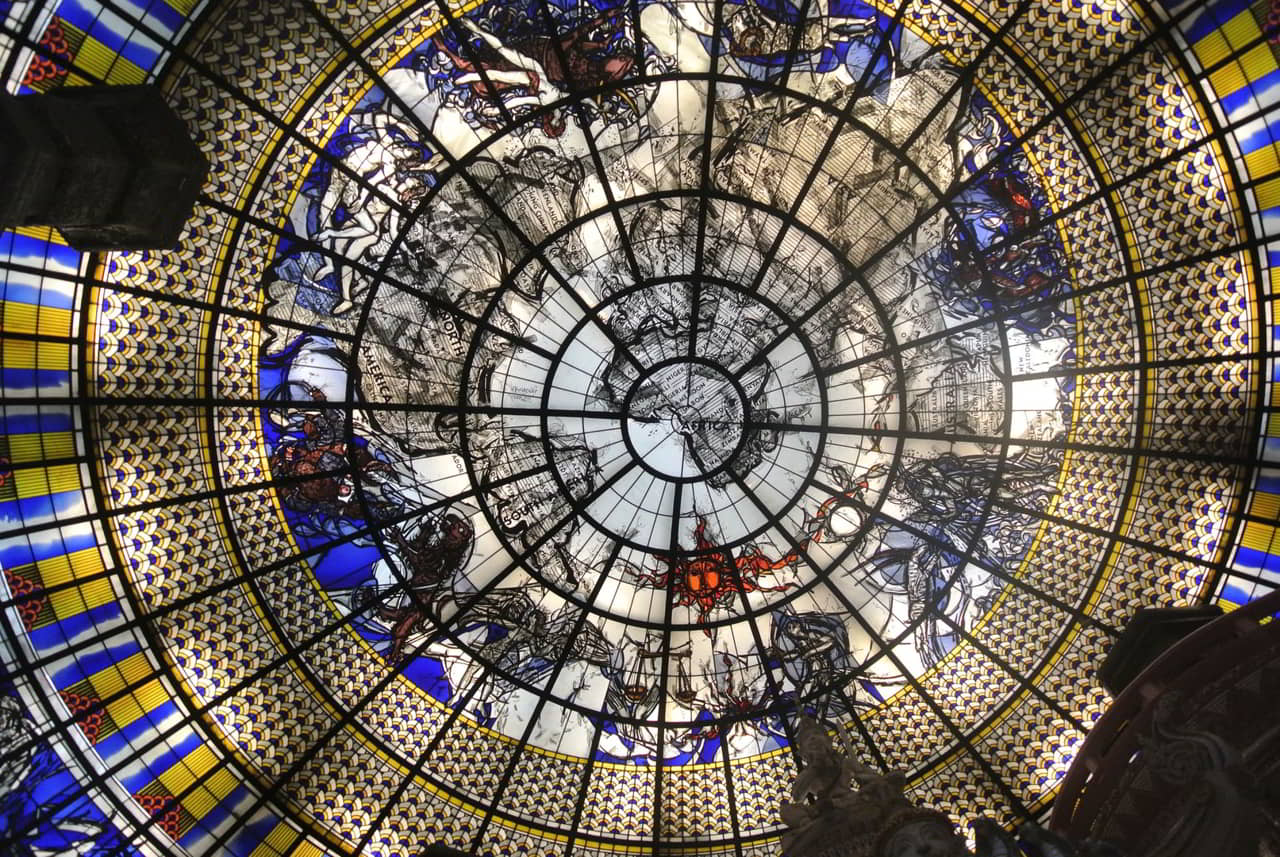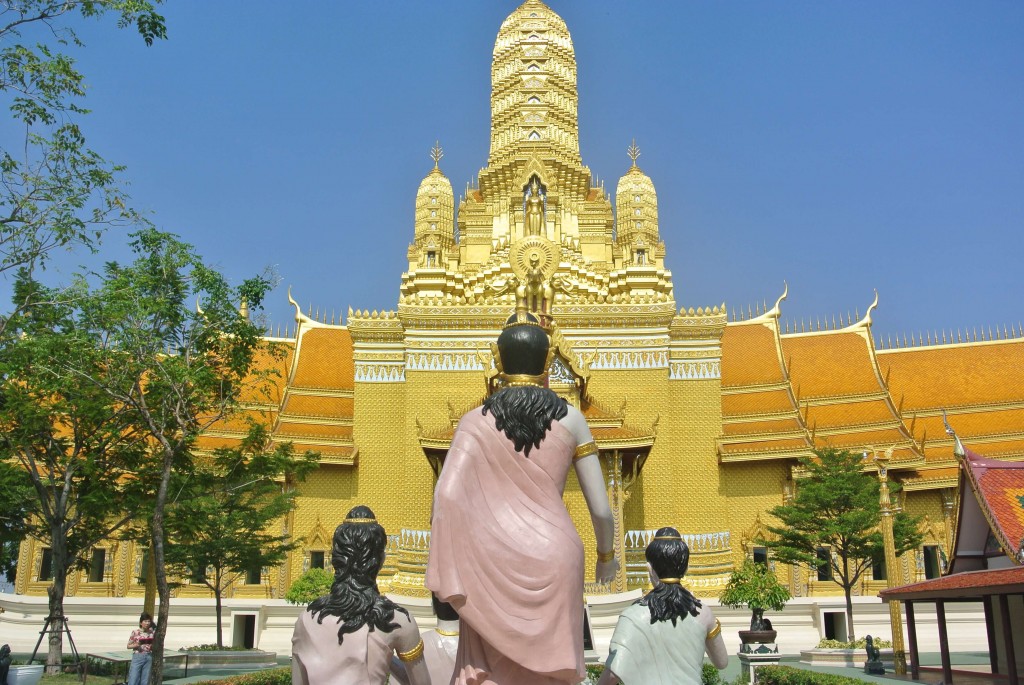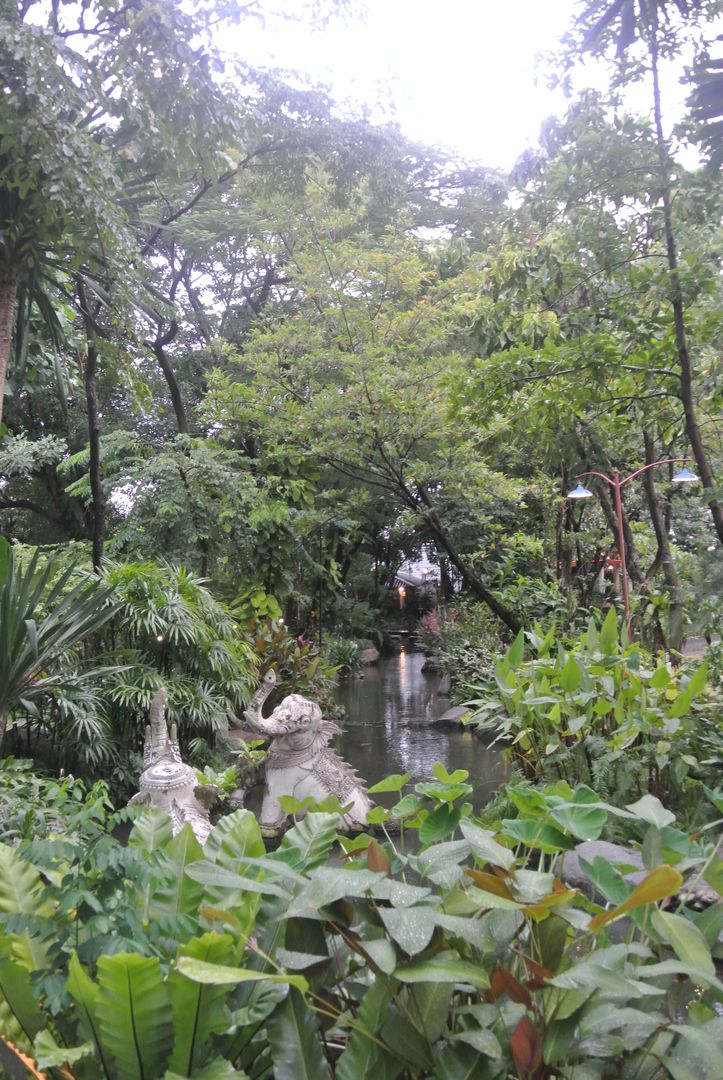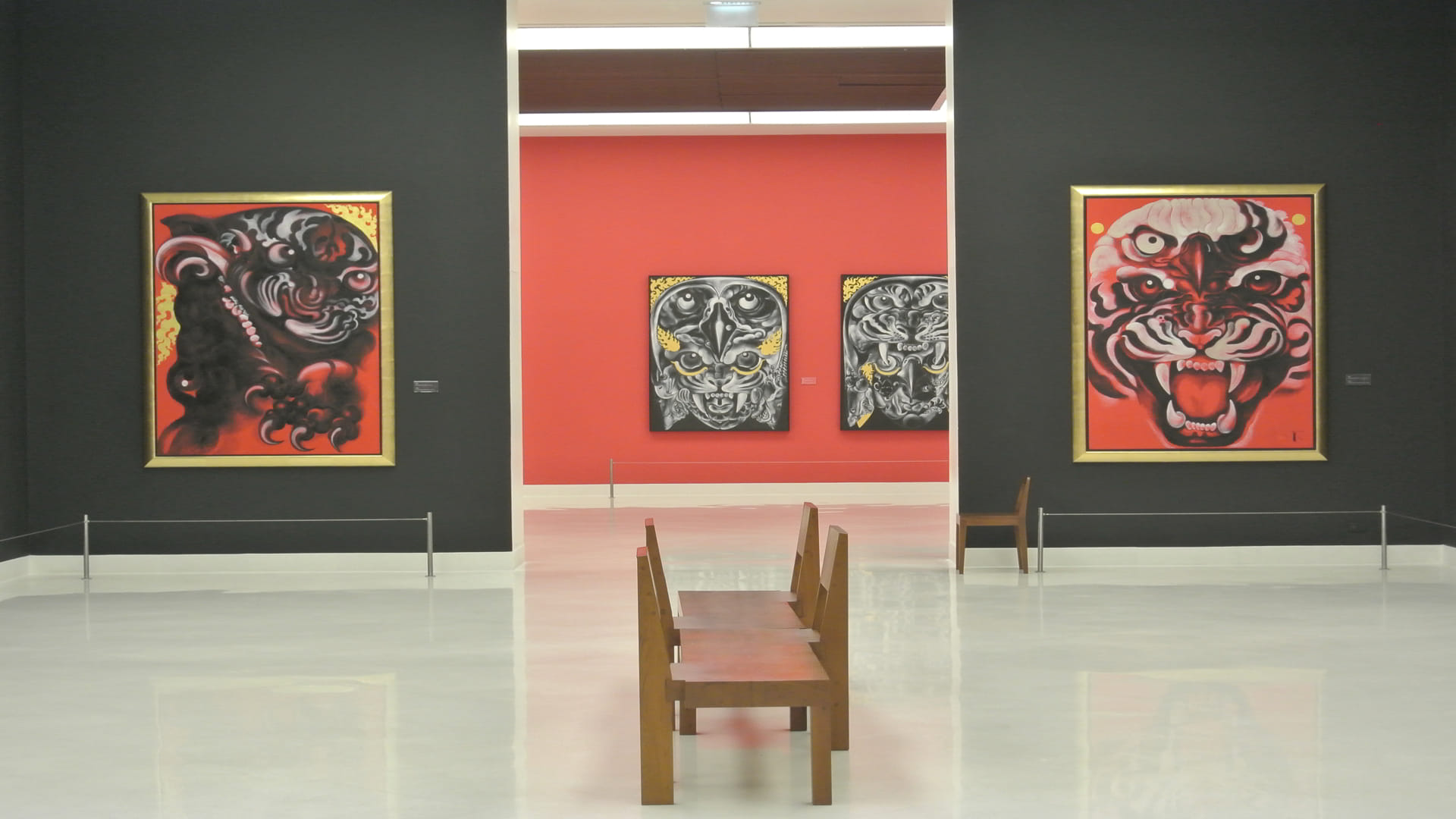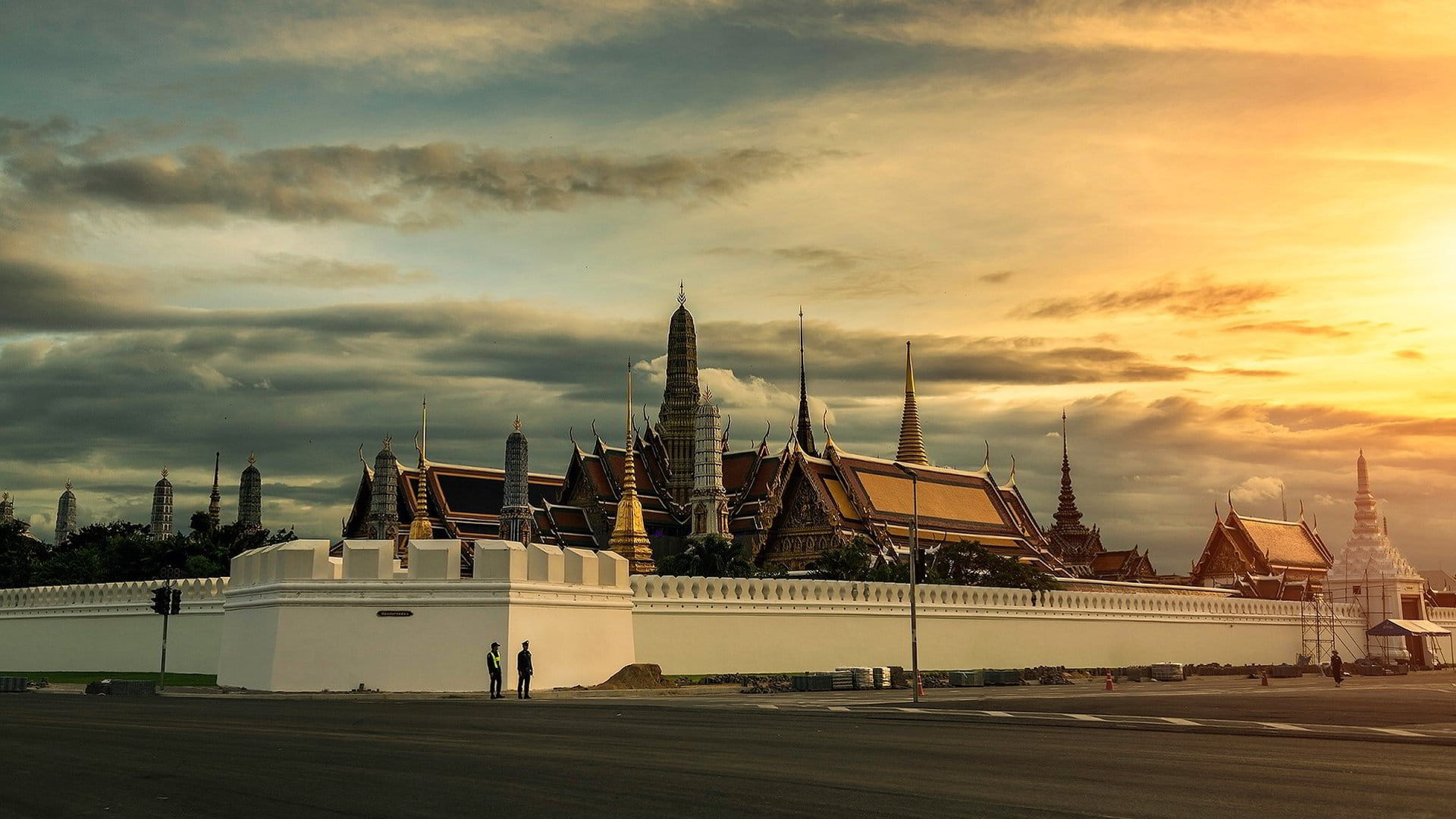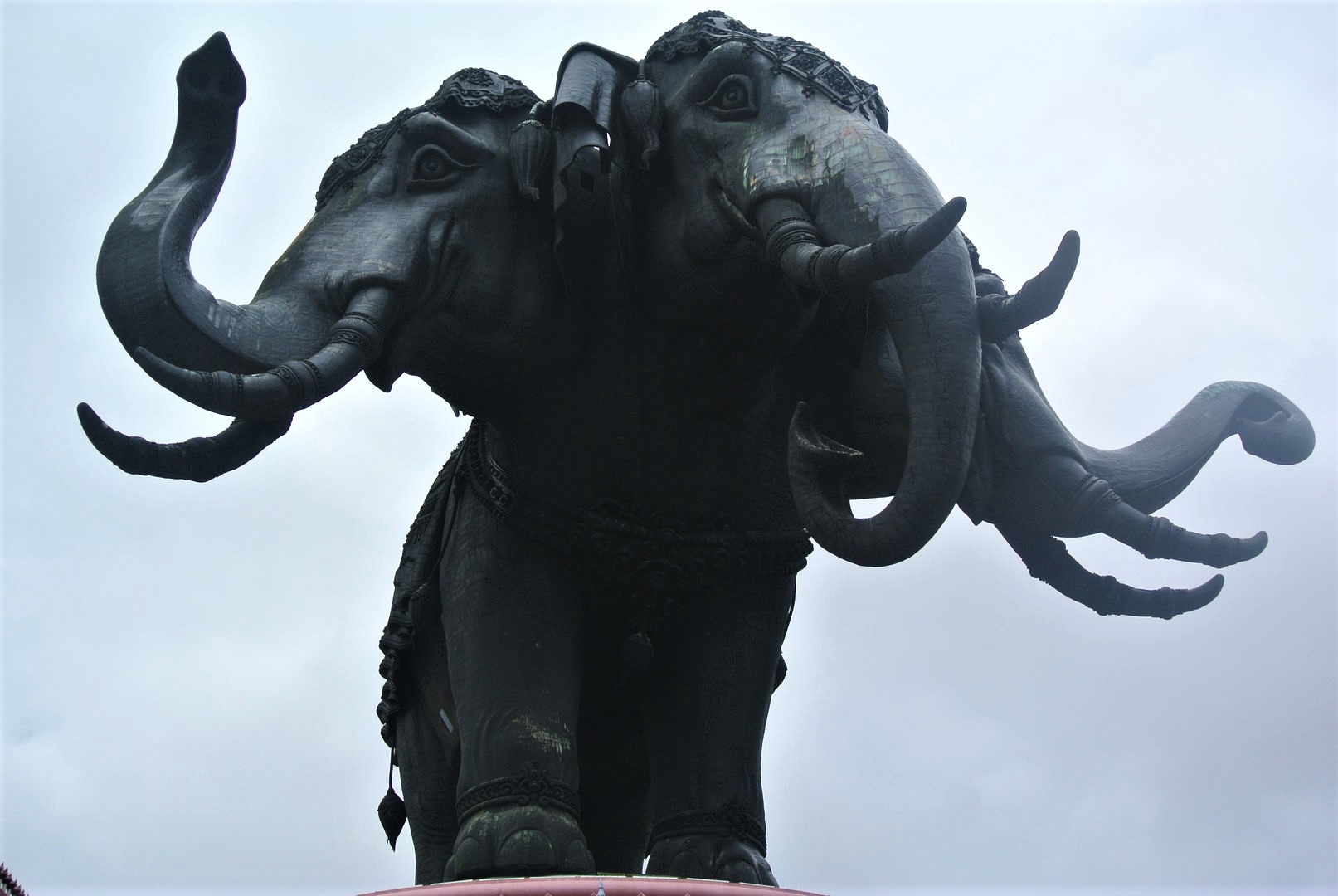
Erawan Museum Bangkok: Explore the Giant Three-Headed Elephant Temple
Located just outside Bangkok in Samut Prakan, the Erawan Museum is famous for its giant three-headed elephant statue. Inside this remarkable structure lies a museum filled with Thai culture, Buddhist cosmology, and unique antiques. Here’s everything you need to know before your visit.
Erawan Museum History: Bangkok’s Three-Headed Elephant Statue
Located on the outskirts of Bangkok, near a major thoroughfare, the museum is easy to spot thanks to its colossal statue. The 43.6 metre high statue of Erawan, the god of all elephants, stands on a promontory.
The three-headed elephant is gigantic - the measurements speak for themselves: 29 metres high, 12 metres wide and 39 metres long. The weight of the elephant is no laughing matter either: 150 tonnes. The head alone weighs 100 tonnes.
Erawan Museum Architecture: Thai Mythology in Stone
Huge, but not overwhelming. This statue of the mythical three-headed elephant Airavata is very intriguing. While the building is monumental, it nevertheless retains a beautiful balance. This is no doubt due to the finesse of the finish, which is rich in unsuspected detail. As you approach the beige-pink base, details appear. Bas-reliefs appear, and the door frames are worked in pure Thai style.
If the exterior is stunning, the interior is equally surprising. The behemoth is transformed into a museum, and the wonder continues.
What to See Inside the Erawan Museum
We start with the basement. The circular room features some fine tea sets, jars and other ceramics from different periods and regions of Asia. Maps show the routes taken by merchants, intellectuals and travellers at the time.
But you quickly forget about this basement when you enter the central room… wonder and amazement are the order of the day. Here, everything is detailed, and you enter a unique universe.
Symbolism and Buddhist Cosmology at the Erawan Museum
Two enormous najas form spiral staircases. On their sides, dragons and mythological characters are inlaid, giving relief and disparate shapes that are nonetheless so harmonious.
The glazed earthenware reflects the light from a ceiling worthy of the finest rotundas in old European cathedrals. The dominant colour is blue, representing the cosmic sky, which demands so much attention on its own because it is so rich. In a way, it tells the cosmogonic story of Erawan and therefore of us all. Mythology, Buddhism and syncretism are all represented here.
Some might see it as a simple manifestation of kitsch art, but there’s no doubt that there’s more here than the delirium of a wealthy patron.
Upper Floors of the Erawan Museum: Buddha Statues and Altars
There are two rooms on the first floor, which can be reached by lift or staircase. The second, the top of the beast, is also a place of prayer, and is undoubtedly the most kitsch of the rooms.
To the right and left are 8 Buddha statues, from different periods and regions of Asia. Beautiful pieces that cannot be photographed. Opposite, an altar with a shiny Buddha, but which looks very dull next to its illustrious predecessors.
Relax in the Garden Park of the Erawan Museum
After your visit to Erawan, you can take a stroll in a small, pretty and beautifully landscaped park. There are many statues of naga and mythical deities. Only the sound of the water in the fountains and the small stream titillate the visitor’s ears.
Timetable, prices and access to the Erawan Museum
- Address: Erawan Museum - 99 Bang Mueang Mai, Mueang Samut Prakan District, Samut Prakan 10270.
- How to get there: BTS Sukhumvit line, Erawan Museum station
- Open daily from 09:00 to 19:00
- Entrance fee: 400 baht per person - 200 baht per person from 5pm onwards
- Official website: Erawan Museum
- Catering on site
- Umbrellas available in case of bad weather 😃
Lek Viriyaphan: the man behind the Erawan Museum
The Erawan Museum is one of Bangkok’s most unusual museums. It is the brainchild of Lek Viriyaphan. This Thai businessman is famous for the large-scale architectural projects he has financed and designed in Thailand. In addition to the Erawan Museum, the Thai people also owe him two emblematic complexes: Ancient City in Bangkok (not far from the Erawan Museum) and the Sanctuary of Truth in Pattaya.
FAQ: everything you need to know about the Erawan Museum
This FAQ aims to provide essential information to help you plan your visit to the Erawan Museum and fully enjoy this unique Bangkok attraction.
What is the Erawan Museum?
The Erawan Museum is a museum located in Samut Prakan, on the outskirts of Bangkok, famous for its gigantic three-headed elephant statue, known as Airavata or Erawan. This structure houses precious antiques and religious objects.
How tall is the three-headed elephant statue?
The statue of this mythological elephant is 29 metres high, 39 metres long and 12 metres wide. Including the pedestal, the total height reaches 43.6 metres, making it one of the largest giant statues in Bangkok.
What does the three-headed elephant represent?
The three-headed elephant, known as Airavata (or Erawan in Thai), is a mythological creature of Hindu and Buddhist cosmology, serving as the mount of the god Indra.
What are the main exhibitions at the Erawan Museum?
The museum is divided into three levels symbolising Buddhist cosmology:
- Basement (World of the Nâgas): Presents collections of Chinese porcelain from the Ming and Qing dynasties, as well as the history of the museum’s construction.
- Middle floor (World of Humans): Showcases precious antiques, including European ceramics and pottery, with a statue of Guanyin, the Chinese goddess with a thousand arms.
- Upper floor (Tavatimsa Paradise): Houses relics and statues of Buddha from different periods, with paintings depicting the cosmos.
How do I get to the Erawan Museum from Bangkok?
The museum is accessible via the Sukhumvit line of the BTS Skytrain. Get off at Chang Erawan station, located not far from the museum.
What are the opening times and entrance fees?
The museum is open daily from 9am to 7pm. Admission is 400 baht per person, reduced to 200 baht after 5pm.
Can I take photographs inside the museum?
Photography is permitted in certain areas of the museum, but it is advisable to check the instructions on site or ask the staff.
What other museums can I visit in Bangkok?
The vast majority of Thai museums are in Bangkok, and there are many of them. Here is a guide to help you discover them all:



